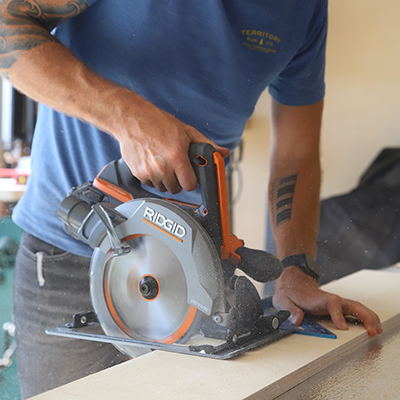How to Use a Hand Saw
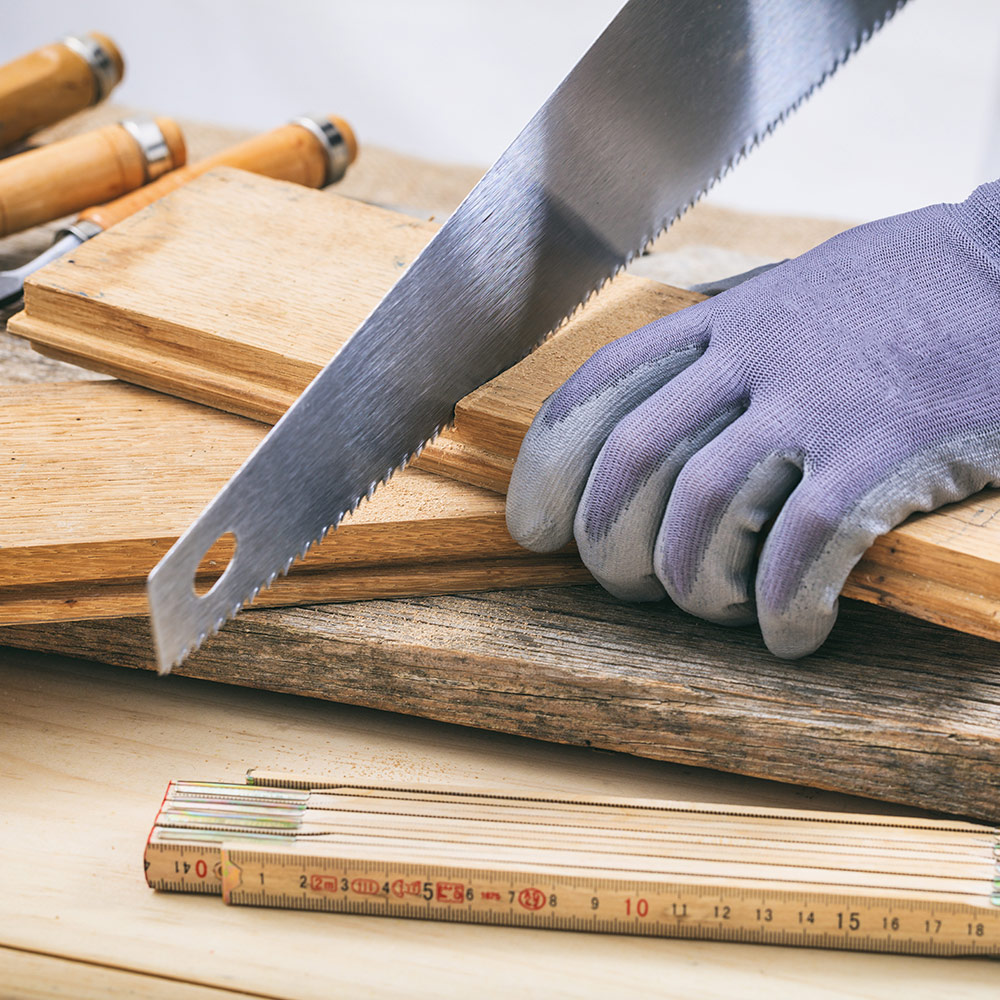
Last updated September 7, 2023
The hand saw is a classic tool with a long history. It has been around for so long because it’s useful for a variety of projects, and it’s easy to use when you know how. This guide teaches you how to use a hand saw and offers tips on hand saw safety.
Difficulty:
Beginner
Duration:
Under 2 hours
Table of Contents
Measure and Mark
Adjust Your Grip and Stance
Make the Cut
Hand Saw Safety Tips
Measure and Mark
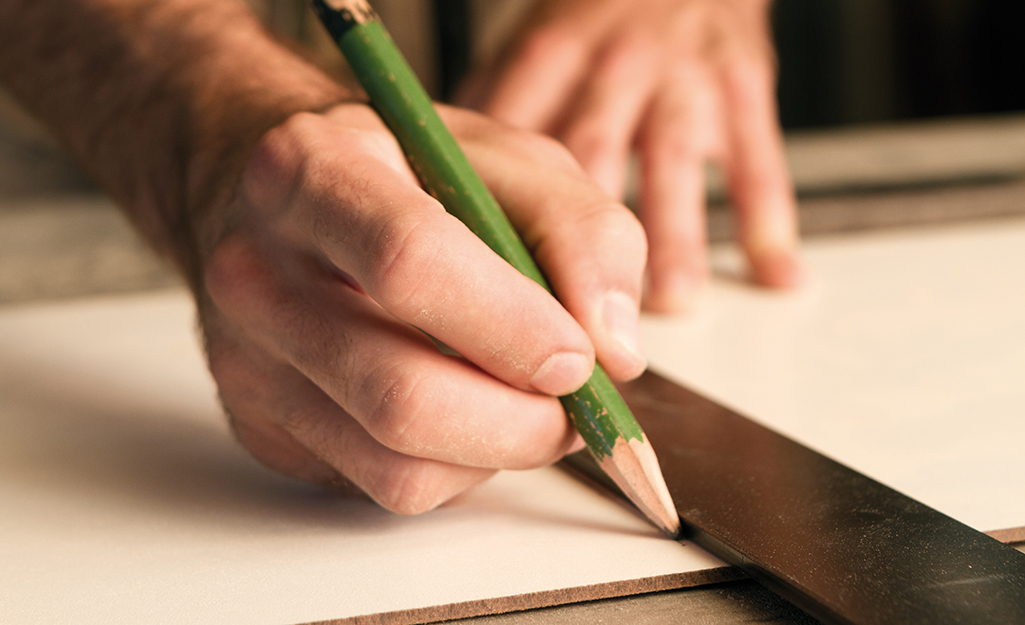
For a clean and accurate cut with a handsaw, first make sure your cut is in the right place. Begin by making accurate measurements with a tape measure and precise cutline marks.
To make the cutline, use a combination square placed across the face of the board. This will ensure a straight line that is square to the edge. You can also measure and mark each side of the board, then use the straight edge of your hand saw to connect the points for an accurate cutline.
Use a sharp pencil to make your mark, then measure again before cutting.
Tip: Your board can shift if it's not secured to your workbench or sawhorse. Use clamps placed near the cutline to stabilize your workpiece before sawing.
Adjust Your Grip and Stance
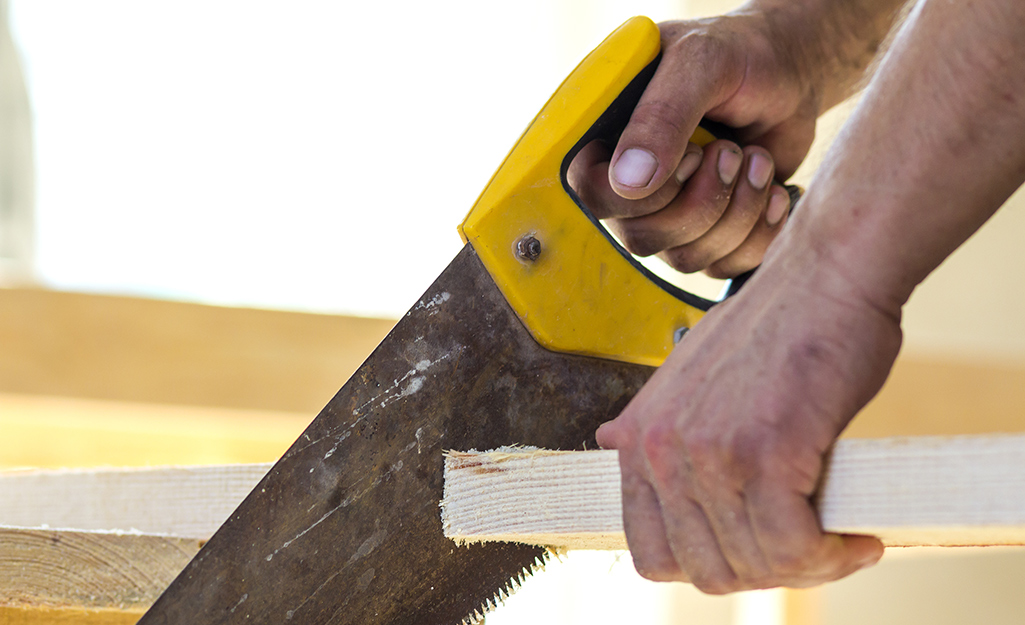
A confident and relaxed stance is key for a successful cut. Set your feet slightly wider than shoulder-width apart, with your left leg forward if you are right-handed. This position allows you to gain leverage and power on the forward and backward strokes.
Have the wood at about hip height or the height of your upper thigh. If it’s too high, you’ll lose leverage and power. If it’s too low, you’ll risk losing your balance and grip.
Use the following tips for hand placement and grip:
- Grip the saw in your dominant hand. Keep your index finger pointing down the side of the blade. In most cases, your dominant hand is your writing hand.
- Align your wrist, arm and shoulder with the blade
- Keep your elbow close to your body to help prevent the saw blade from tilting to the side
Tip: Don’t cut directly on your cutline. Align the blade next to your mark on the waste side of the cut. You can’t add length to the board after cutting, but you can always use a sander if your saw cut is too long.
Make the Cut
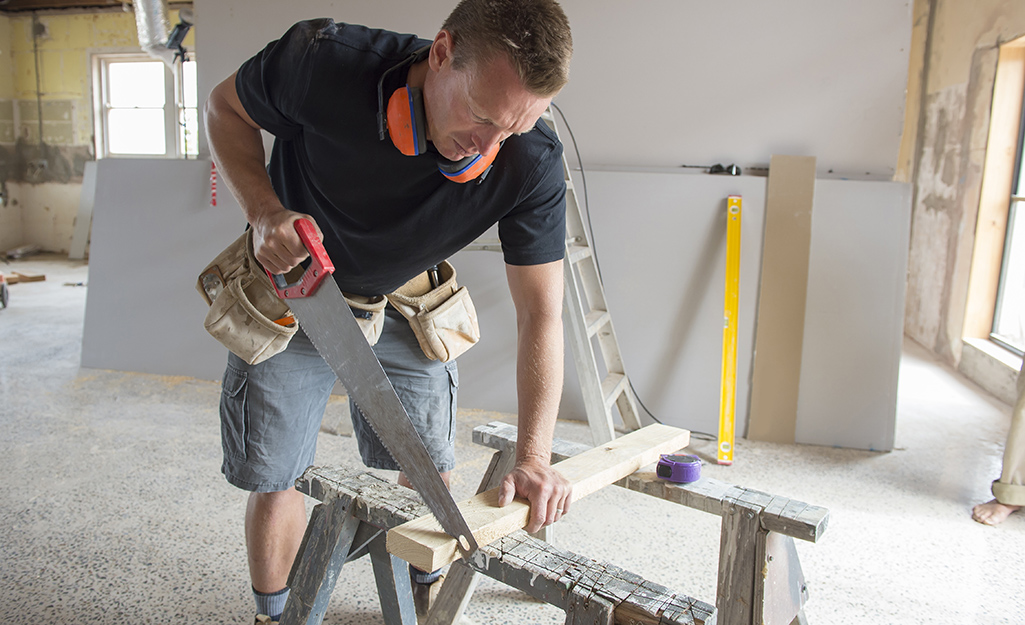
When you’re ready to make your cut, follow these steps:
- Keep the saw at about 45 degrees to the face of the wood. Use a steeper angle for aggressive cuts and a lower angle for fine cutting.
- Start with the teeth nearest to the handle at the cutline on the far edge of the board
- Make a back cut by drawing the saw toward you with a short motion to make a small notch or groove in the edge
- Lift the saw and reposition it into the groove with the teeth nearest to the handle at the cutline. Make another short back cut with light force to deepen your starting cut.
- After three or four back cuts, continue cutting with a forward and backward motion to work the saw along the cutline on the board face
- Make long, easy strokes so you use the full length of the blade in every cut
- Let the saw do the work. Don’t grip too tightly and don’t use too much force.
- Shorten your strokes and increase the cutting angle for a clean finish as you near the end of your cut
- If you veer away from the cutline, stop sawing. Remove the blade and begin cutting again where you got off track.
Tip: Use a scrap piece of a 2- x 4-inch board or other stock as a guide to help ensure a straight cut. Clamp it onto your workpiece along the cutline, and keep the saw blade flush against the scrap as you saw.
Hand Saw Safety Tips

In general, a hand saw is safer to use than a power tool. But accidents do happen. Here are a few safety tips to help ensure a successful and injury-free experience:
- Wear safety glasses to help prevent sawdust from getting into your eyes
- When possible, make your cuts on a flat, stable surface
- If you are pruning or need to make an above-height cut, use a ladder and have a helper nearby to keep it steady. Use a safety harness whenever possible.
- Regularly clean your blade and keep your saw teeth sharp. A dull and dirty saw blade is harder to cut with and can get stuck in the cut, causing you to lose your grip or lose balance.
- Keep your non-dominant hand away from the moving blade at all times.
In many cases, using a hand saw is more convenient than a power tool. If you’re in an area with no access to power, it may be your only option.
There’s a wide array of hand saw types to choose from. Each type is best suited for a particular use or material. The teeth decide which task the saw can tackle. Large-teeth can handle heavy-duty tasks. Smaller teeth work best for finer cuts on delicate surfaces. The shape of the blade can also impact the use. For example, a drywall saw blade is tapered at the tip, making it useful for puncturing. It allows you to cut out access points for utilities in the middle of the sheet. Choosing the right saw for the job is important, but the basic technique for using a hand saw is the same.
This guide shows you how to use a hand saw and offers some safety tips so you can approach your next cutting task with confidence. Check out our selection of saws in our store or online. The Home Depot delivers online orders when and where you need them.


